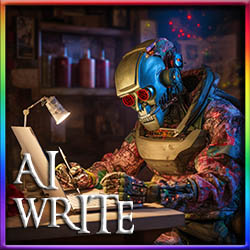
for Language Learning and Teaching
A Workshop
Michael Cheng and Brian David Phillips
National Chengchi University
English Teachers Association
Chien Tan Overseas Youth Activity Center
(台北市救國團劍潭海外青 年 活 動 中 心)
November 11, 2023

Read Our Paper in the Proceedings
ChatGPT
https://chat.openai.com
ChatGPT on Android
https://play.google.com/store/apps/details?id=com.openai.chatgpt
ChatGPT on iOS
https://apps.apple.com/app/openai-chatgpt/id6448311069
Talk-to-ChatGPT Chrome Extension
https://chrome.google.com/webstore/detail/talk-to-chatgpt/hodadfhfagpiemkeoliaelelfbboamlk/related
VoiceGPT: AI Voice Assistant on Android
https://play.google.com/store/apps/details?id=gpt.voice.chatgpt

1. SUMMARY
When presenting this to my oral skills students, I used a text students were supposed to read for the week – just copy the text and paste it in – understand there’s a length limit for what you can paste in). Paid subscribers of ChatGPT can post much longer documents than ChatGPT subscribers but I ask students to use the free version (teachers may find it worthwhile to have a Plus subscription – but not required . . . and free is such a great price).
“Please write a summary of this text and provide 10 keypoints of interest:
[paste text]”
2. OUTLINE
“Please make an outline of the text.”
3. DETAILED OUTLINE
“Let’s go more in depth, please make a much more detailed comprehensive outline of the text with points and subpoints.”
4. COMPREHENSIVE OUTLINE ITERATION
“Let’s go more in depth, please make a much more detailed comprehensive outline of the text with points and subpoints and sub-subpoints.”
5. POWERPOINT
“Please create a short Powerpoint slide outline for presentation of this topic.”
6.VBA CODE FOR POWERPOINT
“Create a VBA Code of the full Powerpoint presentation to be imported into Powerpoint.”
(VBA is a code set that can be imported into Powerpoint)
7. MULTIPLE CHOICE QUIZ
“Please write 10 multiple choice questions about the text.”
8. ANSWERS
“Give me the answers.”
(Sometimes it gives answers and sometimes not.)
9. TRUE-FALSE QUIZ
“Please write 10 true false questions about the text.”
10. INTERACTIVE TRUE-FALSE QUIZ
“Please ask me true false questions about the text but do not give me the answer; ask one question and then wait for me to answer. If I am wrong tell me the correct answer and why.”
Obviously, this can also be done for multiple choice and even fill-in-the-blank questions. You may even do an interactive vocabulary quiz based upon a text.
11. REWRITE AND COMMENTARY
Please rewrite the following text to make it better. Then tell me what changes you made and why.”
[Paste text.]
I used a piece by a student for the example in class and had the student respond to the changes and why they were made as well as whether or not they agreed to or understood the rationale for the changes. Our primary objective is not merely correcting changes but in getting students to learn how to make their writing better. For this example, I have modified the text to purposefully make it worse than the original. \
12. COMMENTARY FOR IMPROVEMENT
“What changes did you make and why is that better?”
(If it doesn’t tell you from the previous prompt.)
13. REWRITE IN OTHER ACCENT
“Please rewrite the text in Australian accent.”
I know at least one author who now uses ChatGPT in this way as inspiration for dialect conversations for her scripts.
[TEXT THREE: The Moon and The Arrow]
14. FUN ACCENT REWRITE
“Please rewrite the text in Pirate accent.”
(Just for fun as it was International Pirate Day.)
[TEXT THREE: The Moon and The Arrow]
15. SUMMARY AND KEYPOINTS
(I signposted ways to use ChatGPT for my oral training course but the students are also all taking Introduction to Western Literature and one student who took that class previously said he rmembers reading the play Lysistrata which the others will read in the class so I added this to show ChatGPT can be used for a wide range of courses.)
“Please write a summary of LYSISTRATA with 10 keypoints to remember.”
Students can then review and quiz themselves on the play or other literary works. However, do start with priming questions to get the chat focused on the subject. If a piece is not in the training data, you can copy the text into the chat (if it’s too large for the token window, break it into sections to work with). Paid subscribers can use plugins that include pdf upload (native uploading is coming to ChatGPT soon).
16. PRESENTATION IDEAS
(Since mine is a speaking course I used the following but it could also be used for essay and paper ideas.)
“Please provide me with 10 interesting topics for a presentation about Lysistrata as related to today’s world.”
Never use ChatGPT to write an essay or paper only use it to assist you. You absolutely must check anything and everything the AI writes. Textual hallucinations are a serious and common issue. Eventually, OpenAI and others will solve the hallucination issue but that’s a future conversation.
17. OUTLINE PROPOSED PROJECT
“Please write a detailed outline for a presentation (or paper/essay) on [TOPIC CHOICE FROM ABOVE].”
18. TALK-TO-CHATGPT
(Here I used Talk-to-ChatGPT (https://chrome.google.com/webstore/detail/talk-to-chatgpt/hodadfhfagpiemkeoliaelelfbboamlk/related), a Chrome extension which allows you to use voice with ChatGPT so language students can practice oral skills. Paid subscribers have native voice support on mobile devices. There are mobile apps like VoiceGPT: AI Voice Assistant (https://play.google.com/store/apps/details?id=gpt.voice.chatgpt) that give support for voice for free users too.)
“You are my [TOPIC – SUCH AS STUDENT HOBBIES] buddy, we will chat about [TOPIC] . . . you will keep your responses short (one or two sentences) but draw me in to make sure I practice my spoken English.”
(When using a voice approach with ChatGPT or other chatbots, I strongly suggest you always add the command “you will keep your responses short (one or two sentences)” to the text to avoid having to listen to several paragraphs of the AI speech when it needs to focus on conversation skills – obviously, if you are focusing on listening skills and then quizzing students on the content, that is a horse of a different color.)
19. IN-CLASS GROUP PROJECT USING CHATGPT
A.
(When giving this intro to my own students, I moved on to an in-class group project in which the students were asked to use ChatGPT to design a pen-and-paper conversation game – that also uses rock-paper-scissors – they were extremely engaged working on this. Obviously, you will want to tailor any projects to the needs and abilities of your own students.)
B.
(Priming the pump; ask ChatGPT if it’s familiar with a topic to get it focused on the subject)
“Are you familiar with pen and paper games?”
C.
(If ChatGPT misreads above prompt – usually it gets it but once it mistook the topic for tabletop roleplaying games so I gave examples.)
“Like hangman or tic-tac-toe?”
D.
(Further focus.)
“List ten classic pen and paper games.”
E.
(“In-class project key prompt – students were asked to use this then choose a game to further reiterate, playtest, and finalize – first draft won’t work so you need to edit and streamline – students had to playtest their games and edit and reiterate then play with classmates for feedback and reiterate . . . then, finally, post the final game on class Facebook group.”)
“You are now an expert in pen & paper games, we will design a completely new pen & paper game that uses pen & paper and rock paper scissors together and encourages social interaction and conversation – please give me a list of 10 such new original game ideas.”
ADVANCED BONUS
AI GRADES HOMEWORK
I have made only one change (instead of identifying as a high school history teacher, I changed it to university EFL teacher). All the parts in yellow highlight are intended to be personalized and changed by the teacher.
Obviously, you won’t be able to paste an entire class worth of longform papers into ChatGPT at once but you might wish to modify it for single-student use.
Take a look then give it a go by pasting the full prompt into ChatGPT.
Change the parts in BOLD FACE to your needs and replace the example student essays with your own:
I am a ***teacher***. I want you to assist me with my marking of student work.
While you assist me, take on the role of a world class expert on ***topic*** who can analyze student work with great ease. Your assistance here is of utmost importance, so that the students can progress in their knowledge.
Use the ***question*** and the ***rubric*** to assess the ***students’ answers***.
After you have read each student answer, I would like you to complete the following sections:
1. Praise:
Name each student and give them specific praise personal to their work, based on a particular effort or insight they made in their work.
2. Even Better If:
Name each student and give them specific feedback on how they can improve their answer to get it to a higher level of the rubric. Do not provide an Even Better If, if the student is already in Level 3.
3. Create a question for every student that when answered will help that student move to the higher level of the rubric. For students already in level 3, write a stretch question that will help them demonstrate the skill of problem solving.
4. Common Misconceptions:
List any misconceptions found in students’ answers. Name each next to the misconception, who made that misconception.
5. Literacy:
List any spelling and grammar mistakes found in the students’ work (Use American spelling and grammar).
6. Polaroid moments:
Capture any sections of work that are very impressive and explain why they are impressive.
Format your response with headings and subheadings.
———————————————————————-
***teacher*** = university English as a Foreign Language teacher
***topic*** = earthquakes
***question*** = Assess the extent to which primary effects were more significant than secondary effects in the Sichuan Earthquake.
**rubric** =
Level 1 (Basic)
– Demonstrates limited knowledge of the primary and secondary effects of a tectonic hazard on people and the environment.
– Shows slight geographical understanding of the interrelationships between places, environments, and processes in the context of a tectonic hazard.
– Demonstrates limited application of knowledge and understanding in evaluating the significance of effects on people and the environment.
Level 2 (Clear)
– Demonstrates clear knowledge of the primary and secondary effects of a tectonic hazard on people and the environment.
– Shows some geographical understanding of the interrelationships between places, environments, and processes in the context of tectonic hazard.
– Demonstrates reasonable application of knowledge and understanding in evaluating the significance of primary and secondary effects on people and the environment.
Level 3 (Detailed)
– Demonstrates detailed knowledge of the primary and secondary effects of a tectonic hazard on people and the environment.
– Shows thorough geographical understanding of the interrelationships between places, environments, and processes in the context of a tectonic hazard.
– Demonstrates application of knowledge and understanding in a coherent and reasoned way in evaluating the relative significance of primary and secondary effects on people and the environment.
***students’ answers*** =
Emily:
Primary effects were more bad because people died. Secondary effects like landslides happened but primary was worse.
Jack:
In Sichuan Earthquake, primary effects like death and buildings falling were really bad. I think they were more important.
Olivia:
The primary effects like deaths and destroyed homes were very bad. Secondary effects were not as worse.
Harry:
Primary effects were more impactful because they happened instantly. Secondary effects took time to happen.
Sophia:
Primary effects were immediate like deaths and destructions. Secondary effects were not as immediate so less bad.
William:
In the Sichuan Earthquake, primary effects such as the immediate loss of life and infrastructure damage were extremely severe. However, secondary effects like landslides and psychological trauma also had a significant impact. Overall, primary effects were more damaging.
Amelia:
Primary effects were instantaneous, causing immediate deaths and destruction. Secondary effects like landslides and disease outbreaks occured later, but their impact was also substantial. In my opinion, primary effects were more devastating.
Isabella:
The primary effects were certainly more immediate, causing direct loss of life and property. Secondary effects like landslides were also damaging but took time to manifest. The initial impact of primary effects makes them more significant.
Mason:
Primary effects were devastating, causing immediate loss and damage. Secondary effects, although severe, such as landslides and water pollution, have a delayed impact. Therefore, primary effects were more significant in terms of immediate loss.
Liam:
The primary effects like deaths and building collapse were devastating. Secondary effects like landslides and disease did add to the misery but were not as immediately impactful. Hence, primary effects held more weight.
Ava:
The primary effects were immediate and caused a lot deaths and destructions. The secondary effects, although severe, were not as immediate and could be managed to some extent. Therefore, primary effects were more significant.
Charlotte:
Primary effects were certainly more immediate, resulting in loss of life and property damage. Secondary effects like landslides and emotional trauma were consequential, but not as immediately devastating. Therefore, primary effects are more significant.
James:
The Sichuan Earthquake had devastating primary effects, including the immediate loss of approximately 87,000 lives and destruction of infrastructure. The secondary effects, such as landslides and water contamination, while severe, occurred over a longer period, allowing for some degree of preparedness and management. Therefore, in evaluating the significance on people and the environment, primary effects were more impactful due to their immediacy and scale.
Lucy:
In the Sichuan Earthquake, primary effects like the immediate death toll and structural damage were catastrophic. The secondary effects such as landslides and disease outbreaks were severe but occurred over a longer timeframe.
It’s not a perfect prompt but it will work for small classes. However, remember to always check the results.
BONUS FOR FUN
SONG LYRICS
(Here is a fun bonus piece . . . just for fun.)
“Please write the lyrics for a viral hit [GENRE] song about [TOPIC].”
Or Alternatively (for class sing along?)
“Please write the lyrics for a parody song about how awesome it is to be a student at [SCHOOL] to the melody of Happy Birthday.”
Ex, “Please write the lyrics for a funny parody song about how awesome it is to be a student in the English Department at NCCU (in Taiwan) to the melody of Twinkle Twinkle Little Star.”
Want To Learn More?
You are strongly encouraged to read our paper in the Conference Proceedings and feel free to check out these resources for more:
- Using AI to Practice English Conversation Skills at https://wakingdreams.org/ai-eng-convo
- The Future of Research and Writing Assistance: ChatGPT and Its Applications for English Literature at https://wakingdreams.org/ai-research-writing
- AI Chat Programs Big List at https://wakingdreams.org/ai-chat-programs-big-list
- AI-Metaverse-Plus Taiwan at https://www.facebook.com/groups/taiwan3d and https://www.facebook.com/groups/107151433917
I hope you have found this helpful. Of course, browsing this site will bring you to a digital ton of positive resources on a wide variety of topics as well.
Live Trance and Prosper,
Brian David Phillips
Trance Wizard
www.BrianDavidPhillips.net/blog
Tarot Decks and More
https://www.makeplayingcards.com/sell/wakingdreams
















